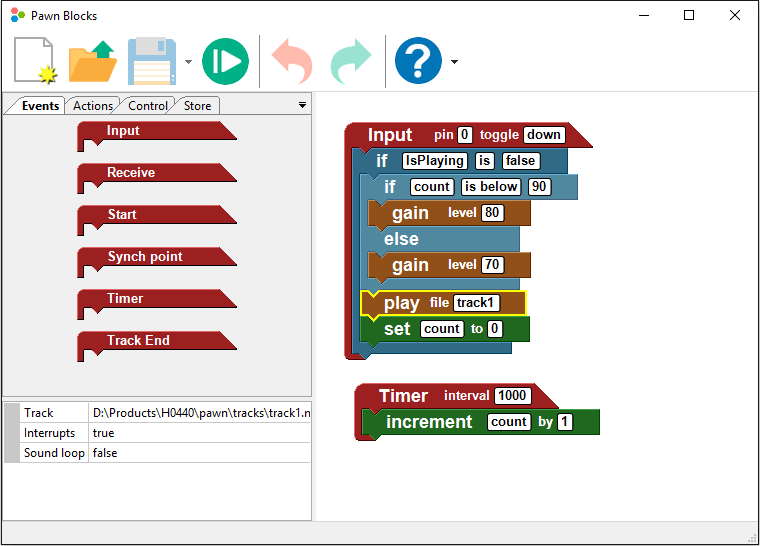pawn Blocks Designer


pawn Blocks is a "visual programming language" (VPL), a means to create programs by combining coloured blocks. Each block has a specific function, and many blocks have parameters to further tweak those functions.
A visual programming language simplifies programming in two ways. Firstly, the blocks typically replace multiple "code instructions" of the equivalent in a conventional (textual) programming language. Therefore, it takes fewer blocks to implement a program than you would need to type as code instructions in a textual language. Secondly, syntax is made very intuitive in the graphic way that the blocks snap together.
Due to these advantages, learning to create simple programs in a VPL is relatively easy and quick, even for specialized areas such as embedded systems. For example, below is a short introduction to the "Designer" application for pawn Blocks. While showing the various blocks, it develops a progressively more advanced program for an industrial audio controller.
While at first sight the program developed in the video may seem like a toy example, it is strikingly similar to the implementation for the railway museum, where an infrared proximity sensor starts an audio sequence for a steam engine starting up and drives a fog machine at periods synchronized with the audio.

